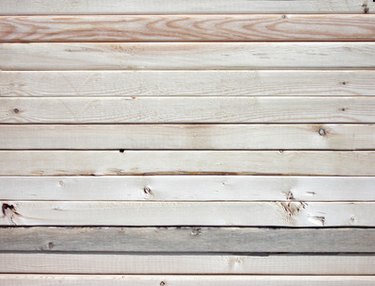
Deodar cedar (Cedrus deodara) is a species of pine tree native to India, Nepal, Pakistan and Afghanistan. In its native habitat, dedoar reaches a height of 50 to 200 feet and grows at altitudes of 3,500 to 12,000 feet. The tree is used in landscaping projects in the United States, Canada, Argentina, China and a host of European nations. Deodar, or Himalayan cedar, lumber is used in various applications in its native habitat and has been for some centuries.
Medicinal Uses
Video of the Day
In the Ayurvedic medical tradition, deodar wood is used as a carminative, or to relieve painful gas and toxins of the bowels. According to online resource Mother Herbs, other traditional medicinal systems decoct deodar lumber, or distill it into a drinkable potion, and use the decoction to treat fevers, pulmonary and urinary disorders, rheumatism, piles, kidney stones, insomnia and diabetes. Incense is made from the aromatic interior wood of the tree. Elizabeth M. Williamson writes in her book "Major Herbs of Ayurveda" that deodar wood is used to treat ulcers, bloody diarrhea and skin disease in cattle, goats and buffalo.
Video of the Day
Historical Uses
Deodar cedar lumber is straight-grained, rough to the touch, medium fine, oily, aromatic and white to yellowish brown. The lumber of the Himalayan cedar tree has been used historically in a number of construction projects on account of its strength. Historical empires of the modern nations of India, Pakistan and Nepal used the lumber to build temples and the landscapes around those temples. Deodar lumber was also used to build traditional houseboats in Kashmir and India for those who lived on rivers.
Colonial Uses
During the Colonial era foreign forces occupying India, particularly the British, took advantage of the strength and ubiquity of deodar cedar lumber by using it in myriad infrastructural projects. Colonial uses of deodar lumber included the construction of military barracks, public buildings, bridges, canals and carriages. Deodar cedar was also used extensively in the construction of railways in India. Railway uses included wooden ties, railway bridges and freight and passenger cars.
Modern Uses
Contemporary India, Pakistan and Nepal have many uses for the lumber. According to international non-profit organization World Agroforestry Centre, deodar lumber is commonly used in general carpentry and as plywood for various construction projects. Other uses of deodar lumber on the subcontinent in the 21st century include house construction, support beams, floorboards, doors and door frames, window frames and furniture. Himalayan cedar wood is still used in railway projects such as the construction of sleeper cars and freight carriages and railway wagon repair projects.